Abstract
The influence of synthetic polymeric agents on the immune responsiveness of congenitally athymic (nude) mice was investigated by determining the effects of in vivo treatment with polynucleotides and polymeric haptenated antigens on splenic theta-bearing cells, on mitogen stimulation and on plaque-forming cell responses to thymic dependent and thymic independent antigens. Contrary to in vitro data, no evidence was obtained to demonstrate in vivo restoration of these immune parameters by the use of non-specific immune enhancers. Further, despite the continued release of lipopolysaccharide from the bowel, older nude mice (10 months old) demonstrated no acquisition of improved T-cell function. Nude mice responded well to the thymic independent antigen p-azobenzenearsonate-N-acetyl-tyrosylglycylglycine (A-TGG) Ficoll. Finally, the class specific responses to the thymic independent antigen DNP-Ficoll were significantly different from those of nu/+ littermate controls, indicating the importance of thymic influences upon the class switching of immunoglobulin responses.
Full text
PDF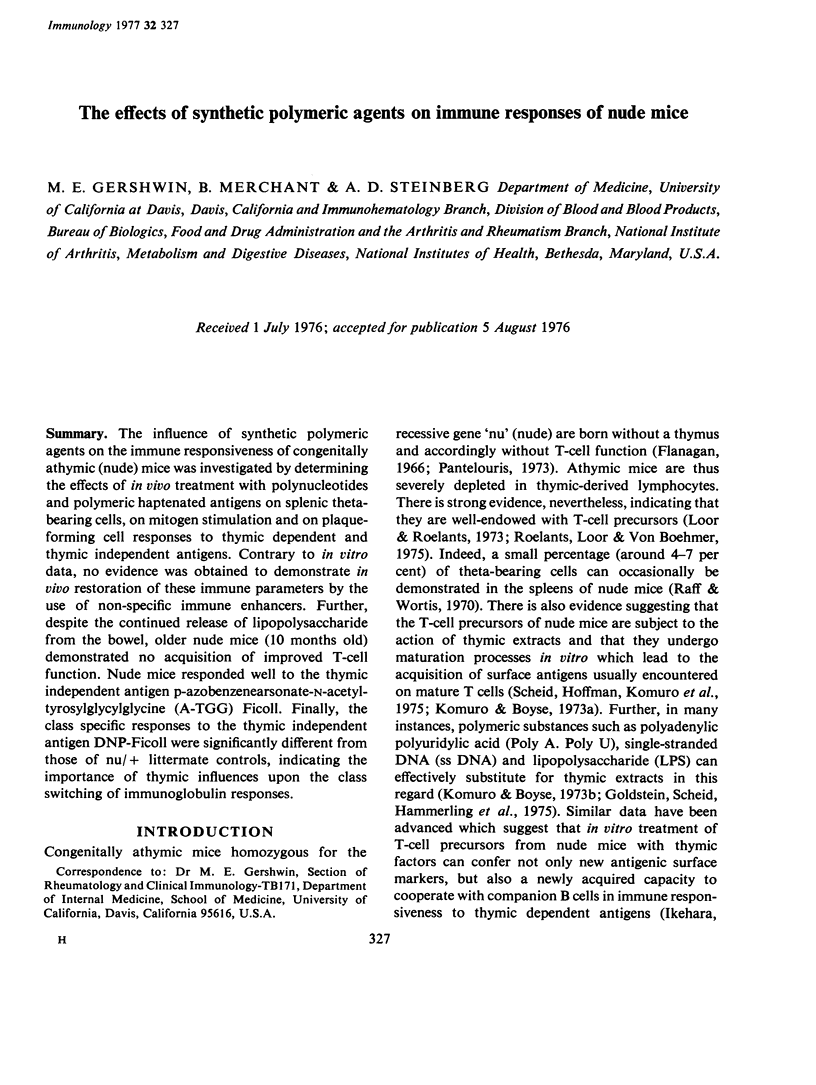
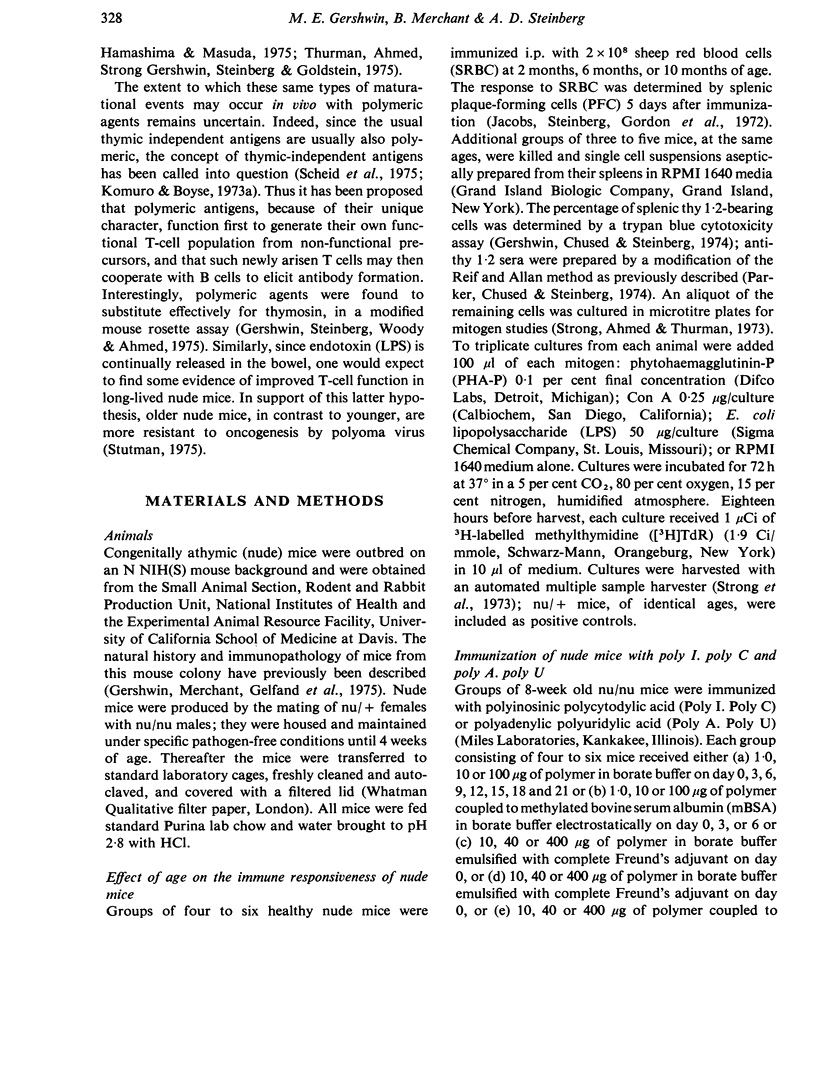
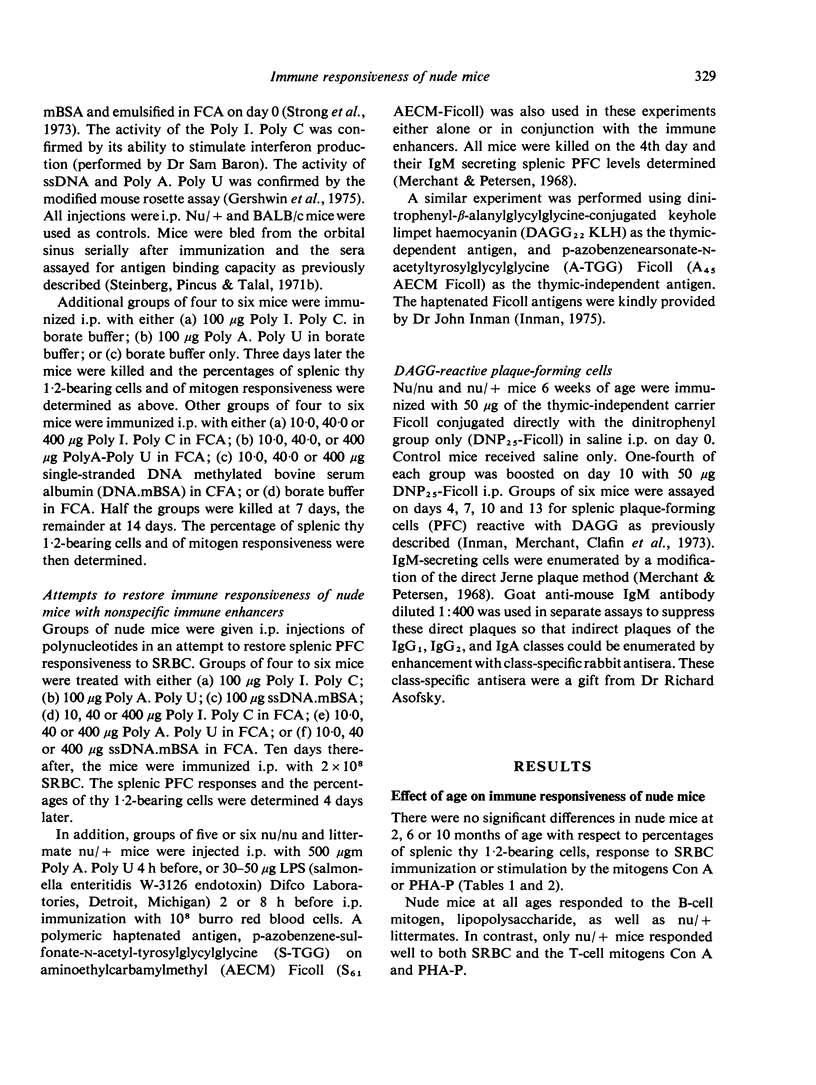
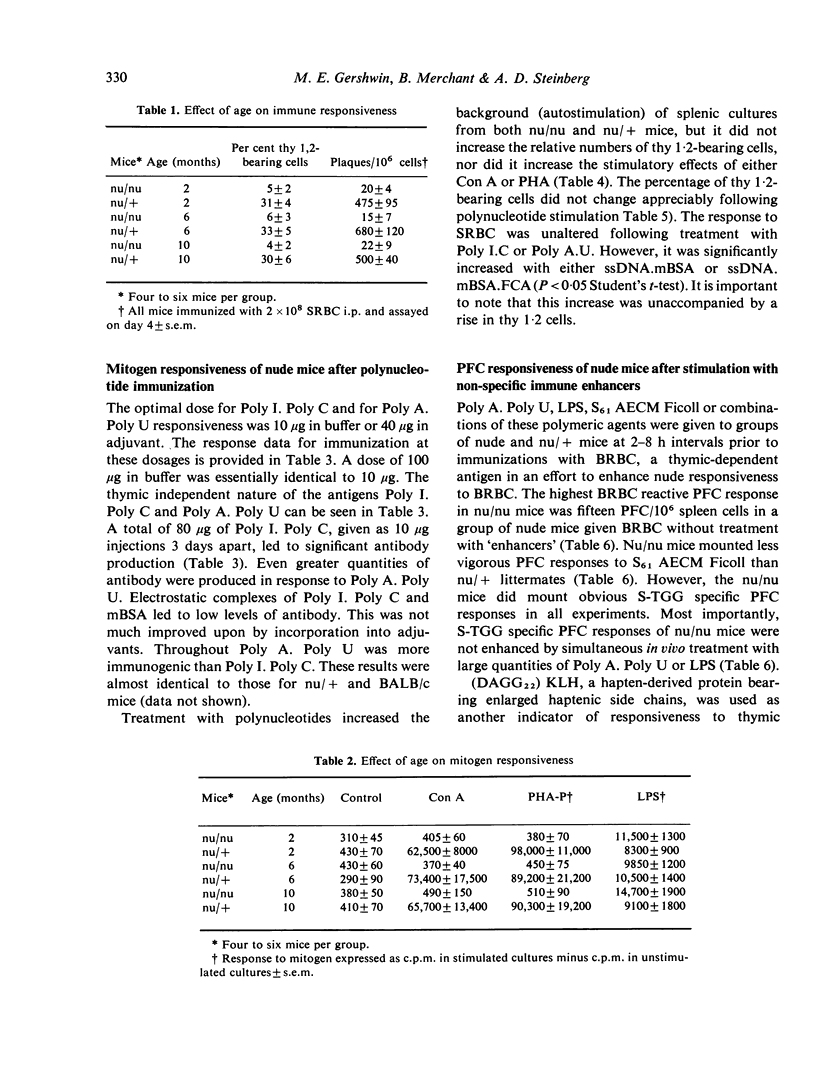
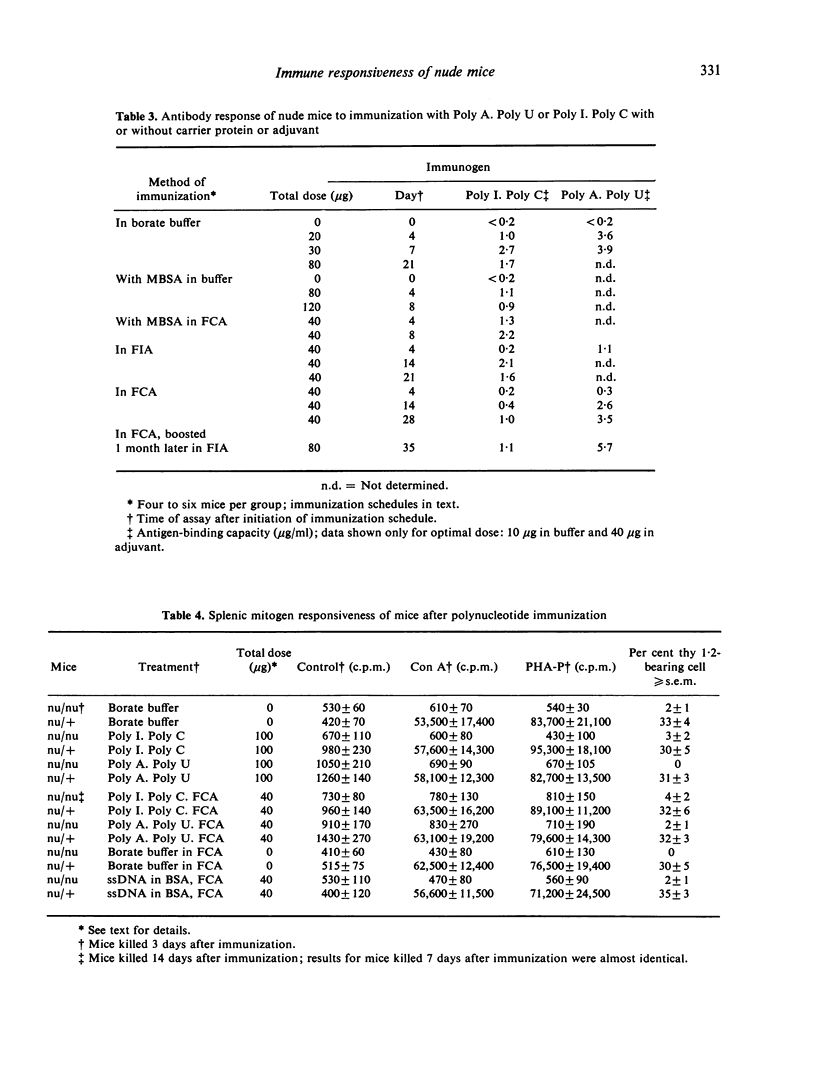

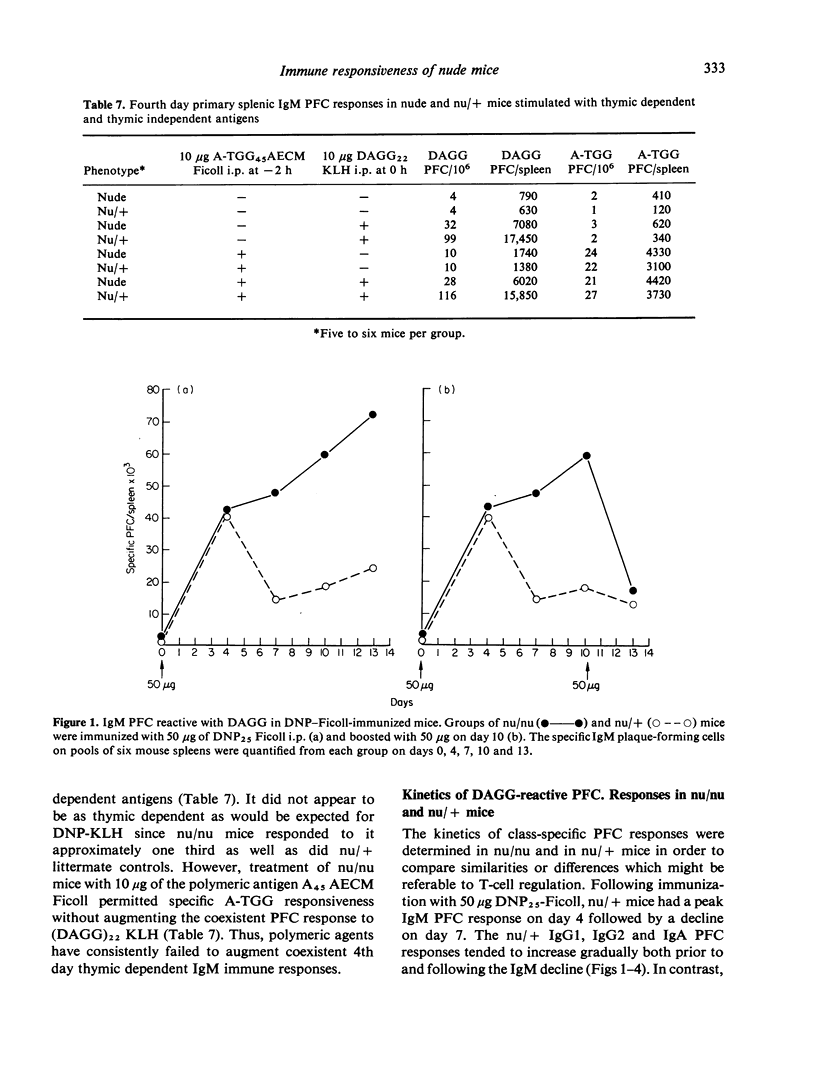
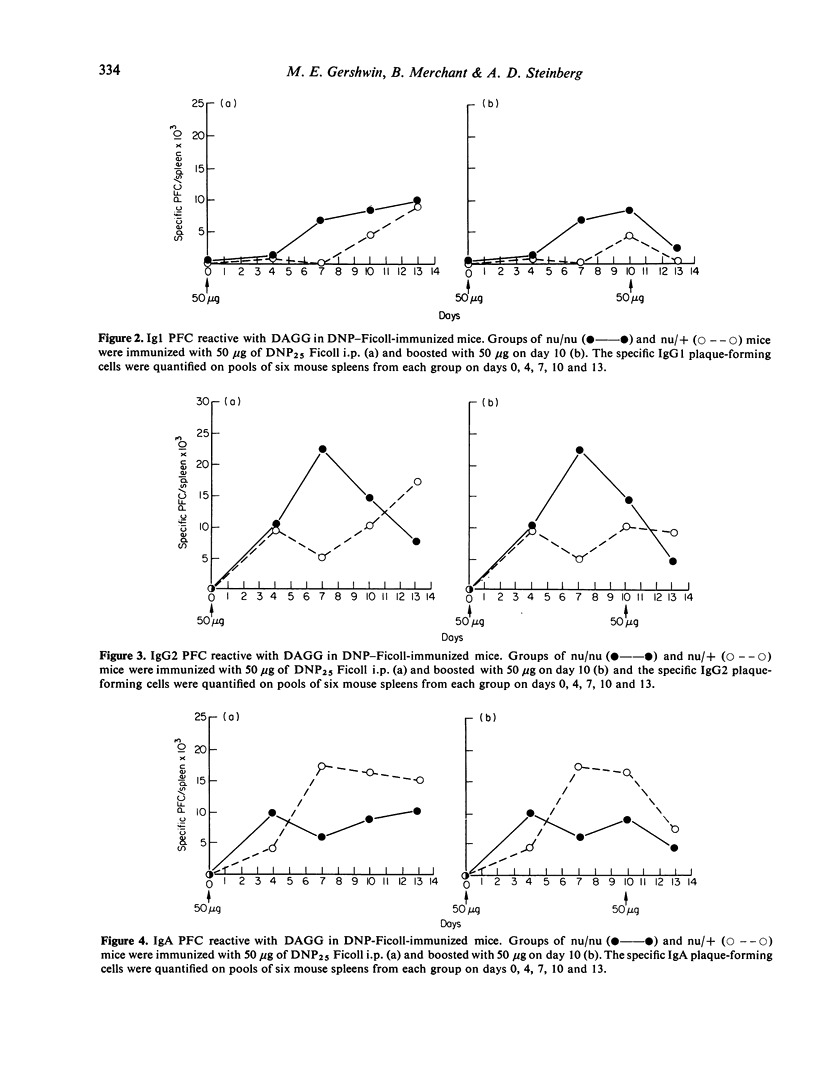

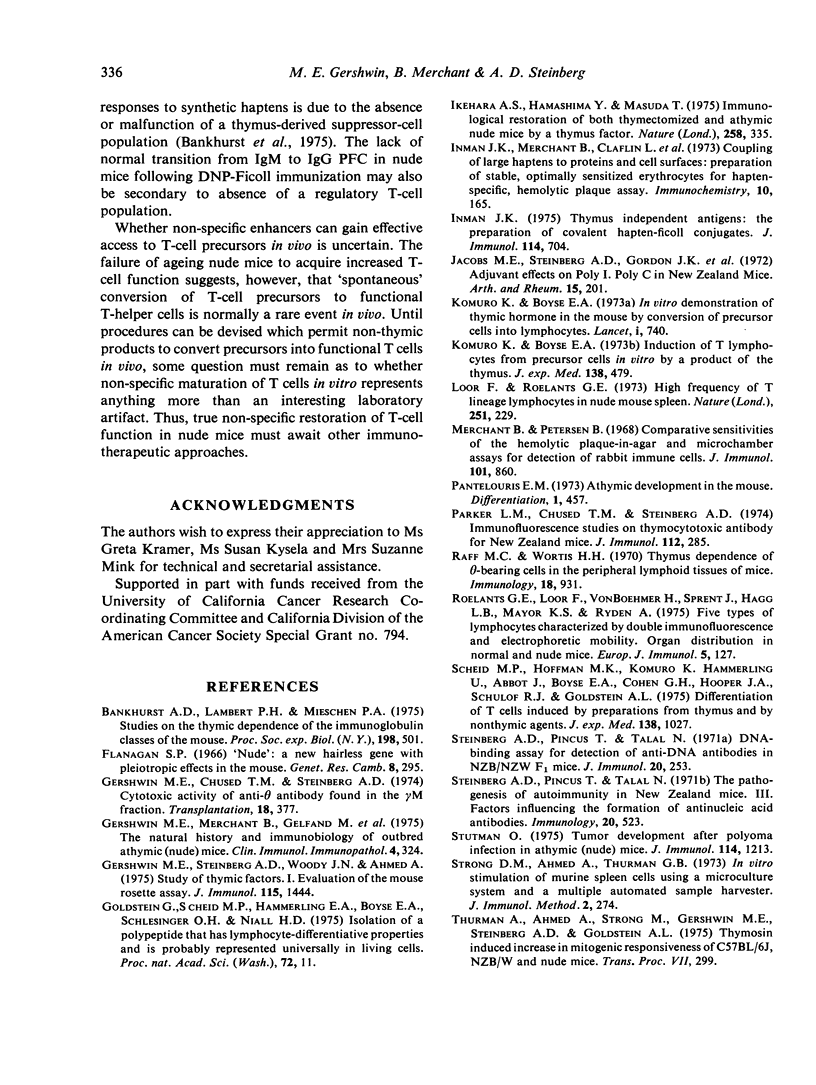
Selected References
These references are in PubMed. This may not be the complete list of references from this article.
- Bankhurst A. D., Lambert P. H., Miescher P. A. Studies on the thymic dependence of the immunoglobulin classes of the mouse (38570). Proc Soc Exp Biol Med. 1975 Feb;148(2):501–504. doi: 10.3181/00379727-148-38570. [DOI] [PubMed] [Google Scholar]
- Flanagan S. P. 'Nude', a new hairless gene with pleiotropic effects in the mouse. Genet Res. 1966 Dec;8(3):295–309. doi: 10.1017/s0016672300010168. [DOI] [PubMed] [Google Scholar]
- Gershwin M. E., Chused T. M., Steinberg A. D. Cytotoxic activity of anti-theta antibody found in the gamma m fraction. Transplantation. 1974 Oct;18(4):377–380. doi: 10.1097/00007890-197410000-00015. [DOI] [PubMed] [Google Scholar]
- Gershwin M. E., Merchant B., Gelfand M. C., Vickers J., Steinberg A. D., Hansen C. T. The natural history and immunopathology of outbred athymic (nude) mice. Clin Immunol Immunopathol. 1975 Sep;4(3):324–340. doi: 10.1016/0090-1229(75)90002-1. [DOI] [PubMed] [Google Scholar]
- Gershwin M. E., Steinberg A. D., Woody J. N., Ahmed A. Studies of thymic factors. I. Evaluation of the mouse rosette assay for thymic hormone. J Immunol. 1975 Nov;115(5):1444–1448. [PubMed] [Google Scholar]
- Ikehara S., Hamashima Y., Masuda T. Immunological restoration of both thymectomised and athymic nude mice by a thymus factor. Nature. 1975 Nov 27;258(5533):335–337. doi: 10.1038/258335a0. [DOI] [PubMed] [Google Scholar]
- Inman J. K., Merchant B., Claflin L., Tacey S. E. Coupling of large haptens to proteins and cell surfaces: preparation of stable, optimally sensitized erythrocytes for hapten-specific, hemolytic plaque assays. Immunochemistry. 1973 Mar;10(3):165–174. doi: 10.1016/0019-2791(73)90005-0. [DOI] [PubMed] [Google Scholar]
- Inman J. K. Thymus-independent antigens: the preparation of covalent, hapten-ficoll conjugates. J Immunol. 1975 Feb;114(2 Pt 1):704–709. [PubMed] [Google Scholar]
- Jacobs M. E., Steinberg A. D., Gordon J. K., Talal N. Adjuvant effects on poly I poly C in New Zealand mice. Arthritis Rheum. 1972 Mar-Apr;15(2):201–207. doi: 10.1002/art.1780150211. [DOI] [PubMed] [Google Scholar]
- Komuro K., Boyse E. A. Induction of T lymphocytes from precursor cells in vitro by a product of the thymus. J Exp Med. 1973 Aug 1;138(2):479–482. doi: 10.1084/jem.138.2.479. [DOI] [PMC free article] [PubMed] [Google Scholar]
- Loor F., Roelants G. E. High frequency of T lineage lymphocytes in nude mouse spleen. Nature. 1974 Sep 20;251(5472):229–230. doi: 10.1038/251229a0. [DOI] [PubMed] [Google Scholar]
- Merchant B., Petersen B. Comparative sensitivities of the hemolytic plaque-in-agar and microchamber assays for detection of rabbit immune cells. J Immunol. 1968 Nov;101(5):860–867. [PubMed] [Google Scholar]
- Parker L. M., Chused T. M., Steinberg A. D. Immunofluorescence studies on thymocytotoxic antibody from New Zealand Black mice. J Immunol. 1974 Jan;112(1):285–292. [PubMed] [Google Scholar]
- Raff M. C., Wortis H. H. Thymus dependence of theta-bearing cells in the peripheral lymphoid tissues of mice. Immunology. 1970 Jun;18(6):931–942. [PMC free article] [PubMed] [Google Scholar]
- Roelants G. E., Loor F., von Boehmer H., Sprent J., Hägg L. B., Mayor K. S., Rydén A. Five types of lymphocytes (Ig-theta-, Ig-theta+weak, Ig-theta+strong, Ig+theta- and Ig+theta+) characterized by double immunofluorescence and electrophoretic mobility. Organ distribution in normal and nude mice. Eur J Immunol. 1975 Feb;5(2):127–131. doi: 10.1002/eji.1830050211. [DOI] [PubMed] [Google Scholar]
- Scheid M. P., Hoffmann M. K., Komuro K., Hämmerling U., Abbott J., Boyse E. A., Cohen G. H., Hooper J. A., Schulof R. S., Goldstein A. L. Differentiation of T cells induced by preparations from thymus and by nonthymic agents. J Exp Med. 1973 Oct 1;138(4):1027–1032. doi: 10.1084/jem.138.4.1027. [DOI] [PMC free article] [PubMed] [Google Scholar]
- Steinberg A. D., Pincus T., Talal N. The pathogenesis of autoimmunity in New Zealand mice. 3. Factors influencing the formation of anti-nucleic acid antibodies. Immunology. 1971 Apr;20(4):523–531. [PMC free article] [PubMed] [Google Scholar]
- Stutman Tumor development after polyoma infection in athymic nude mice. J Immunol. 1975 Apr;114(4):1213–1217. [PubMed] [Google Scholar]


